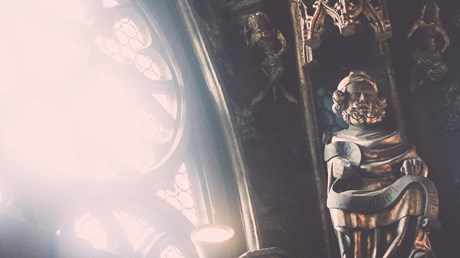An attempt to examine the church’s history through its architecture suffers from narrow understandings of “church” and “history” alike.

The church is not a building, but it certainly has buildings.
My own church has a stone structure by a creek in Johnson City, Tennessee. We know that the first Christians here baptized believers in that water and worshiped together on the banks, nearly 200 years ago, before building the fellowship hall and sanctuary with stone and stained glass.
Around town, I see churches that meet in storefronts, in renovated factories, and one above an upscale barbecue joint. There are big, towering church buildings on the main streets downtown and, further out, churches with wide, rolling, golf-course-worthy lawns. There’s a clapboard church tucked into a hill where they painted over the word Baptist, and now, in slightly unsteady freehand, the sign says Holiness. There ’s a church with a gazebo pulpit in an expansive parking lot, built for drive-in worship; another with space designated for a taco truck; another where the windows have been covered up; and another that looks like a giant Hershey’s kiss. At each of these places, Christians sing and socialize, pray and think about their lives—what they love and what they should love—and they listen to the Word of the Lord.
None of these places, unfortunately, appear in Allan Doig’s A History of the Church through Its Buildings. The “church” of the title turns out to be incredibly narrow, the “history” even narrower.
Size, shape, and composition
Charlemagne is crowned emperor six times in these pages, while Martin Luther shows up only once, critiquing the funding mechanism for the construction of St. Peter’s in Rome. There are no Puritans in the book, despite their intense opinions about church buildings. No Pentecostals, despite ...
from Christianity Today Magazine
via

.gif)

.gif)

.gif)
.gif)
